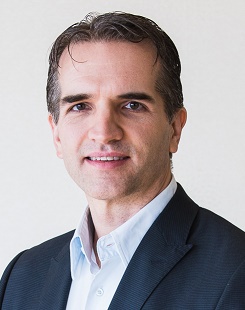Telstra has illegally gained a market advantage by systemically overstating the coverage of its mobile network for over 15 years, rival TPG Telecom has alleged as it airs the results of an analysis that suggests a large part of Telstra’s network only offers coverage using specialised equipment.
The coverage of Telstra’s network is key to its market identity, with the company regularly trumpeting the size of a mobile network that, it says, “covers 1 million square kilometres more than any other mobile network” – making it, Telstra claims, “Australia’s best mobile network.”
Yet signal strength in nearly 1 million square kilometres of Telstra’s network is so low, TPG subsidiary Vodafone argues, that customers in these areas can only connect to the network using expensive external antennas and powered repeaters typically installed on a building or vehicle.
Noting that Telstra and its secondary Boost Mobile brand have portrayed the areas as being part of their normal coverage areas – and therefore accessible to all mobile customers – TPG Telecom group executive for consumer, data and analytics Kieren Cooney called out what he says is a lie.
“It appears Telstra has tricked Australians into paying top dollar for coverage they simply can’t get on a regular mobile phone,” Cooney said, adding that “Telstra’s conduct could have misled consumers into believing they can get coverage in places that require special equipment.”
“By overstating the coverage available to most Australians by such an enormous amount, Telstra and its resellers have no doubt retained customers or attracted customers that might otherwise have chosen Vodafone or other brands.”
Many ways to calculate coverage
The allegations against Telstra – which with 22.5 million retail mobile services and 42 per cent of Australia’s mobile market last year remains the country’s largest mobile operator – come after TPG analysed network maps provided by Telstra for the ACCC’s 2024 Mobile Infrastructure Report.
That analysis – which found Telstra, Optus and TPG Telecom had respectively added 485, 441, and 100 new mobile network sites during 2024 – noted that the ACCC has stopped analysing coverage because “assessment of changes in coverage has been challenging.”
Discrepancies between previous coverage maps had “impacted the usefulness of coverage analysis that was conducted in earlier reports,” the ACCC noted, warning that differences in the way each telco measured coverage meant that their relative coverage maps can’t be meaningfully compared.
“Changes in coverage over time for a given [mobile telco] must be treated with caution,” the ACCC said, noting that Telstra last year advised the ACCC that it had changed the way it measures coverage after what it called “substantially underestimating its outdoor coverage for some time.”
“Mobile coverage is inherently variable,” Telstra said, “and derivation of [coverage] maps will always err on the side of conservatism…. It is prudent to allow an error margin to accommodate for the inherent variability of wireless signals.”
Deceptive and misleading conduct?
TPG says it has “repeatedly asked” Telstra to stop misleading consumers with its coverage claims, alleging that while the larger company did make some small changes it still believes these are inadequate – and wants the ACCC to intervene as TPG also considers direct legal action.
Even as telcos argue about the semantics of their coverage calculations – TPG says it only publishes coverage figures for areas where consumers can connect with just their phones – consumer bodies are livid at suggestions Telstra has been duping customers by misrepresenting its coverage.
Telco industry peak consumer body ACCAN, for one, said it is “deeply concerned” about TPG’s allegations, with CEO Carol Bennett calling them “serious and damaging” and arguing “consumers not only expect honesty, but have a right to accurate information under consumer law.”
Exaggerations of better coverage may have been particularly distortive in long-suffering regional areas, with Bennett noting that “many Australians, particularly in regional and remote areas, sign up for expensive plans with Telstra because they believe it’s the only option for reliable coverage.”
Suggestions that they have been misled are particularly problematic in light of previous ACCAN findings that 41 per cent of consumers have “limited faith” in their telcos, Bennett said, and that nearly one third said their real-world coverage “didn’t match what they were told to expect.”
“We are shocked that Telstra appears to have been overstating its coverage by so much for so long,” said TPG’s Cooney, “and we are calling on them to make it right.”
Telstra has denied the allegations, with a spokesperson telling Information Age that “many customers in regional and remote areas benefit from using external antennas to maximise their coverage [and] this is why we have used this as the basis for our coverage footprint.”
“We’re all for transparency and industry consistency in how we report coverage and would gladly put our maps up, side-by-side, so that Australians can see the difference…. Customers have always been able to determine our level of coverage with and without an external antenna.”
“Now that Vodafone has communicated to us how it’s chosen to calculate its coverage footprint, to help the public understand the difference, we’re highlighting that our 3 million square kilometres of coverage is based on using an external antenna.”










